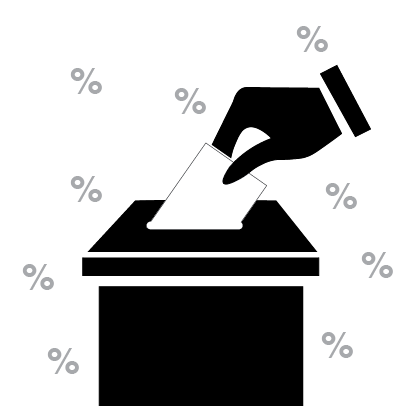If you take a microscope and look at the 2024 election results for every state, you will find that four states and the District of Columbia used ranked-choice-voting for their ballot. Dig further, and you will find that Maine and Alaska also used RCV for their 2024 elections.
The RCV system is nothing new in the United States as it has been used at the local level since the 20th century. Ohio was the first state to use RCV in local elections, starting in 1915. The system has been on and off in many local elections since its arrival. However, RCV made its first jump in 2018 when Maine implemented the system at the state level.
While RCV is known for allowing voters to rank candidates in order of preference. RCV changes a fundamental rule of our winner-take-all system, plurality rules.
Whether it is for a seat in Congress or the presidential seat, a candidate in our current system must win the most votes of a state or region to win everything. A presidential candidate wins all electoral votes for a state by simply getting the most votes in that state.
In other words, a candidate does not need a majority to win, rather they need to take the biggest piece of the pie.
When a candidate only needs the biggest piece to win everything, our elections lose purpose because a candidate can be elected without the approval of a majority.
Let’s take Maine’s governor race from 1974 to 2022 as an example of this. According to the League of Women’s Voters of Maine, of the 13 candidates that won their respective elections, nine were plurality winners with the lowest percentage for a winner being 35.4%.
Angus King, who is currently a state senator, got the most votes in 1994 but 64.6% of Maine’s voters did not vote for King to represent them. Plurality rules is also what got Donald Trump the win during the 2016 Republican Primary. According to Politico, Trump was a plurality winner with 43% of Republican voters.
Now, RCV requires a candidate to win a majority of all voters. If the initial results have a candidate over 50% of all voters, cool, that candidate wins. However, if no candidate passes the 50% line, the purpose of ranking candidates goes into play, and the system begins rounds.
These rounds consist of removing the candidate with the least number of votes and redistributing those votes to the remaining candidates based on who that voter ranked as their second option. These rounds continue until one candidate wins the majority.
So, what does this do for our elections? First, it allows voters to explore third party candidates without spoiling an election. A great asset when the country has seen unfavorable candidates in 2020 and 2024.
According to the Pew Research Center, before Joe Biden dropped out of the race, 68% of voters were not satisfied with the 2024 candidates with this view coming more from Biden supporters. In addition, an article published by Gallup also found that 63% of adults want a third party because the two parties did a poor job at representing them.
When we have two powerful parties in a winner-takes-all system, voting for a third party feels pointless because those two parties will eat up most of the votes. The system forces these voters to vote blue or red as a result because they can win under our system. The way RCV is designed allows voters to have a safety net when they vote for a third party because the redistribution of votes still gives them a say in the election process.
A majority system also creates a more civil political environment, especially during campaigning. Democrats and Republicans attack each other every election cycle, and the way both parties have viewed each other has only gotten worse.
A 2022 study conducted by the Pew Research Center found that the percentage of Democrats and Republicans that found the other party unfavorable has passed 50% on both sides when it was less than 21% in 1994.
The reason for this is simple. It is easier to rally voters against a party than for a party in our system, and this is why we see the two parties attack each other in political ads or campaigns.
On the flip side, RankedVotes found that Maine during its first use of RCV in 2018 had candidates collaborating in political ads. Instead of attacking the other side, the candidates asked their voters to support fellow candidates and give reasons why they make strong leaders.
The focus is to win overall voters in a ranked choice election, not to make the other side lose. As a result, RCV eliminates that negative political climate because candidates can not resort to cheap shots at their opponents to win voters. Instead, candidates must focus on their political goals and values to get voters on their side.
Of course, RCV still needs some polishing especially when implemented for the first time as many are not familiar with how it works. According to a study conducted by Crag Burnett and Vladimir Kogan, RCV results in four elections within the U.S. did not have a majority winner because the ranking system was not used as intended.
It takes time to learn a new system, and that fear should not push voters away from why they wanted to change winner-take-all in the first place. Our system has grown to a two-party mess where a negative climate is needed to win elections, and RCV is the long-term solution to that problem by making one fundamental change.
The cherry on top is that we do not have to reach for the stars to implement RCV as it just needs to be voted into local law. Many cities have already made the change for their local elections by simply proposing the system and letting their citizens decide what is best for them.








